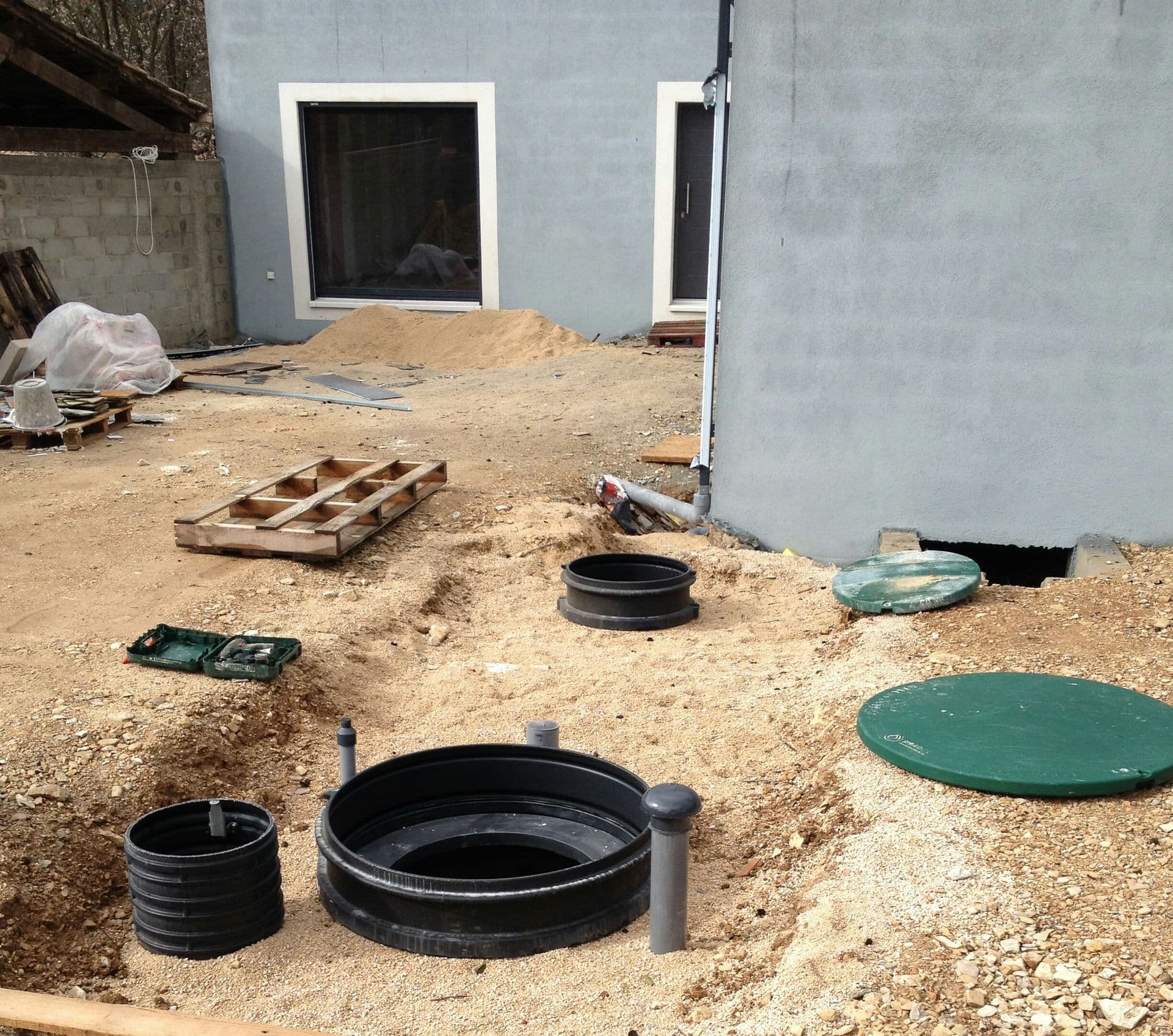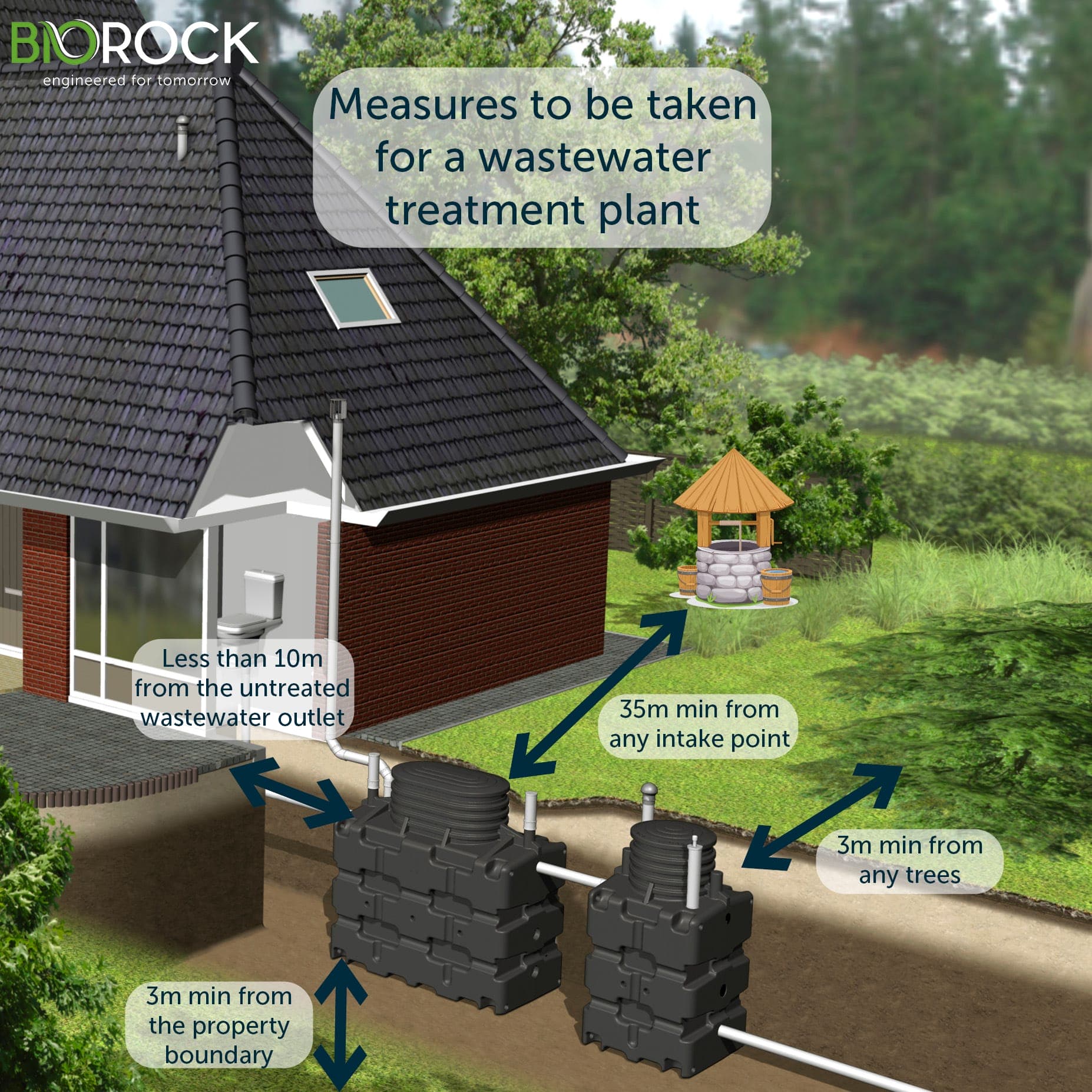You are a sanitation or earthmoving professional and you want to install a BIOROCK solution yourself. You are a private individual and you want to know everything about the installation of a primary tank and a compact filter. We explain the whole process on this page.
However, it is important to understand the risks and regulations associated with such a system before beginning the process. This guide will provide an overview of what to consider when choosing a non-collective sanitation system and how to go about installing it.

Another advantage is that non-collective sanitation systems are more resilient to disruptions. If one household's septic tank fails, the other households are not affected. In contrast, a centralized waste management system can be disrupted if one part of the system fails. For example, if a pipe bursts, the entire system may have to be shut down until the repairs are made.
A non-collective sanitation system is not without its disadvantages. One downside is that each household must be diligent in managing its own waste. If one home neglects its primary tank, it can cause problems for the whole community. It can be difficult to coordinate the maintenance of many small septic tanks, and it may be necessary to empty them more frequently than a single larger sewage treatment plant. Despite these disadvantages, non-collective sanitation systems can be a cost-effective and resilient way to manage waste in communities where a centralized system is not possible or desirable.
There are many reasons why you might want to install a non-collective sanitation system. Perhaps you live in an area with frequent power outages, or you simply want to be more self-sufficient. Non-collective sanitation systems can be used in both urban and rural areas, and they offer a number of benefits. For example, they require no electricity, and they can be used in areas where water is scarce. In addition, non-collective sanitation systems are usually less expensive to install and maintain than collective systems. As a result, they offer a more affordable option for many families.
The installation of non-collective sanitation becomes mandatory if your house is not connected to a public network that collects wastewater. The installation of a septic tank (or primary tank) must follow certain standards and regulations. The work can be complex, especially if you have no knowledge of plumbing and soil preparation.
In reality, septic tank means "primary tank", as the term septic tank is now prohibited. Before installing the septic tank, you must complete some administrative formalities. First of all, you must go to the town hall to withdraw the file concerning the installation and complete it.
Then, the location of the septic tank must be well chosen. The minimum distances to respect for the installation are :
You should also know that non-collective sanitation must not be placed in areas where vehicles pass or are parked.

For the installation, you have to follow these steps:
The BIOROCK compact filters do not require a power supply, which means the product is ready to use without any connections. Commissioning by our technician is part of the quotation. The hot-molded polyethylene tank is extremely durable. As mentioned, a simple backfill with sand or gravel is required.
For more details about the installation, consult our Installation Guide.
If you want to save money, installing your own sewage system may be an option, however, it's not as easy a task as one might think. You need more than just rudimentary knowledge of plumbing and excavation-you also need the time to do it right, plus all the necessary tools and materials.
Although it is best to hire a professional company, you can save money by researching and requesting multiple estimates. Keep in mind, however, that the installation of a non-collective sanitation system is highly regulated. By calling on professionals, you can avoid any unwanted surprises.
To have a primary tank installed by oneself or by a professional implies that the SPANC (Public Service for Non-Collective Sanitation) carries out control of the excellent execution of the installation work and if the tank or its installation does not correspond to the standards, it is liable to a fine.
Installing a non-collective sanitation system can be done yourself but is highly regulated and should be handled by a professional. Doing so will ensure that the installation meets all requirements and regulations, giving you peace of mind. At BIOROCK, we have an exclusive earthworks network specializing in non-collective sanitation to help make the installation process as easy and stress-free as possible. Perfectly capable of installing your newly acquired system, whether it is in the case of the purchase/sale of a house or the rehabilitation of your old sanitation system. For more information, feel free to get in touch with us today.